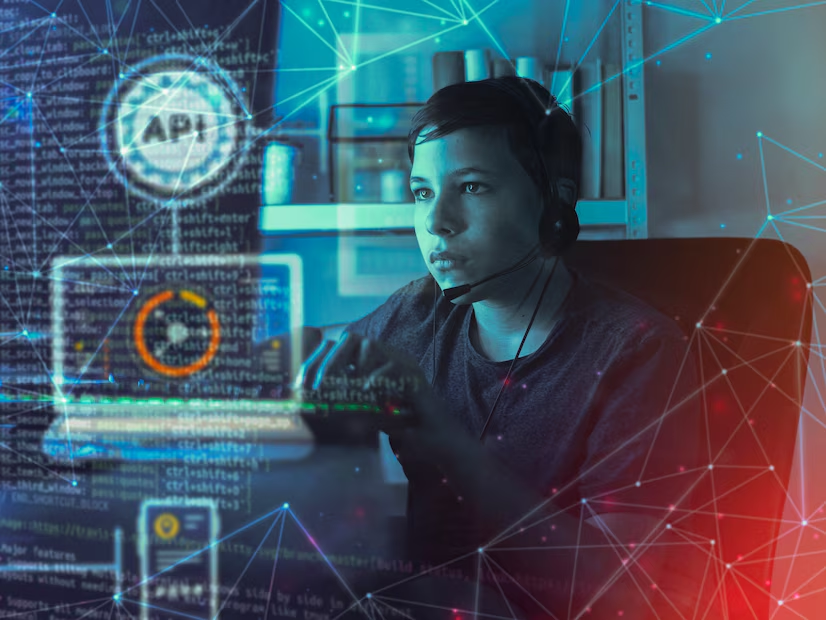AI and ML programs mimic human decision-making, reasoning, and learning. Statistical models and ML algorithms simulate human comprehension. AI toolboxes help in learning, reasoning, and solving complex issues. ML is a dynamic subset of AI that sifts through tomes of data and gains insight to make autonomous decisions.
Thus, ML algorithms can be tailored to personalize user experiences by offering targeted suggestions. ML algorithms learn and adapt data inputs and user interactions. They can be integrated with image recognition, NLP, and recommendation systems.
AI is integrated into code quality improvement, decision-making assistance, and process automation. AI handles repetitive tasks like managing data entry and concurrent testing allowing software experts to focus on highly challenging tasks. ML models continuously learn and get better. They modify their behavior and stay relevant by evaluating fresh data.

Process Automation
AI-process automation integration goes a long way in reducing the delivery cycle by boosting development & eliminating the chances of human errors. Automated code generation leads to reduced bugs and improved quality. However, it does not afford the same control as developer code & not suitable for highly customized projects.
Expert Assistance in Decision-Making
AI tools such as predictive analytics arm decision makers with data-driven insights. This facilitates strategic choices based on trends and identified opportunities. AI-based predictive analytics can throw light on the probability of meeting project deadlines or identifying potential bottlenecks. Resources can thus be appropriately allocated.
Improved Code Quality
Integrating AI in software engineering can result in better code quality. The source code is quickly analyzed for bugs, errors, and security vulnerabilities. The time taken for debugging and corrections is drastically reduced. Real-time feedback on code quality is possible. AI algorithms can identify coding patterns and anti-patterns by analyzing code repositories.
Enhanced Software Security
AI software systems can improve the security posture with robust security measures. AI algorithms can identify potential vulnerabilities, detect anomalies, and predict cyber threats. This greatly mitigates the risks.
Role of AI & DevOps
AI & DevOps integration can go a long way in reducing downtime and addressing problems. This agile development approach offers a nimble response to changing market dynamics.


Automated Code Generation
Deploying AI and ML techniques can facilitate automated code generation. Whether automated complex operations or new code snippets – AI can provide effective and clean code. Best practices and learning patterns are harnessed to generate quality code. Redundant or inefficient code parts can be optimized or improved based on AI suggestions.
AI-driven Debugging
AI-based technologies can easily debug and facilitate quick fixing of problems. AI-powered solutions can proactively detect possible risks thereby promoting dependability and security. Automated testing tools include AI-powered applications such as Functionize, Applitools, and Testim. These tools facilitate automated test generation, innovation testing, defect analysis, and predictive analysis. The tools can identify issues accurately as they are trained on past data.
AI-driven Quality Assurance
ML algorithms can support testing & quality assurance of software solutions. Manual testing can be done away with by providing a more effective assessment of software performance. They can automatically generate test cases, execute, and analyze them.
AI/ML & Natural Language Processing
NLP algorithms work with human language by providing a heightened user experience. They can monitor language patterns, context, and semantics to replicate human-like communication. This can be seen in virtual assistants, conversational interfaces, and chatbots.


Chatbots & virtual assistants can assist in education, customer service, healthcare, and other industries. This feature makes programming more accessible to non-technical users. This can redefine human-technology interaction. Other interesting applications include voice assistants and sentiment analysis tools.
ML algorithms enrich user experiences and contentment by offering personalized suggestions. AI-driven applications can help foster user loyalty and retention. This can be noticed in e-commerce and social media recommendations.
Perks of integrating AI & ML into software development
- Organizations can efficiently allocate budgets on account of optimized allocation of resources.
- The reliance on manual quality assurance is considerably reduced.
- Enhanced collaboration is facilitated between distributed teams
- Automated code creation and intelligent testing reduces development time significantly.
- AI & ML techs are deployed to automate repetitive actions by reducing maintenance costs.
- AI systems are deployed to examine huge datasets and identify trends.
- AI-based algorithms are highly scalable as they can handle increases in data volume.
- AI has facilitated low-code and no-code development.
- Pre-built components, visual interfaces, and drag-and-drop functionality have enabled quick development.
The role of software engineers as far as their intuition, experience, and ethical judgment can never be replaced by AI and ML. Software engineers can harness AI to push technology to create core innovations and amplify their potential.


As Stephen Hawking famously said, “The development of complete AI could spell the end of the human race. It would take off individually & re-design itself at an ever-increasing rate. Humans are therefore limited by slow biological evolution, couldn’t compete & would be superseded.”
Software developers must upskill themselves with AI and new programming languages to further technological advancements. Their role will transition to designing AI-driven solutions and handling AI operations. They must be equipped to leverage technology to enhance capabilities more ethically.
Conclusion
Software engineers can provide the unique human touch to complement the productivity of AI-ML solutions. Novel algorithms can be designed and robust user experiences can be created. It facilitates quick and reliable software release and seamless integration.
Software developers can optimize software functionality, resolve issues proactively, and enhance user experience. Contact us today for the best-in-class AI/ML development services.





